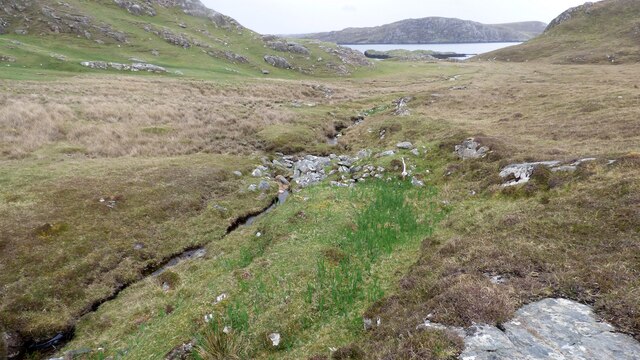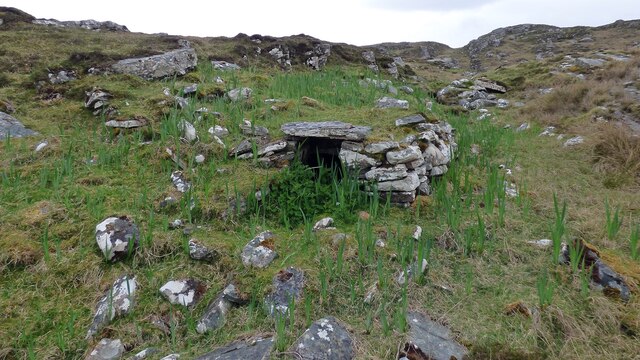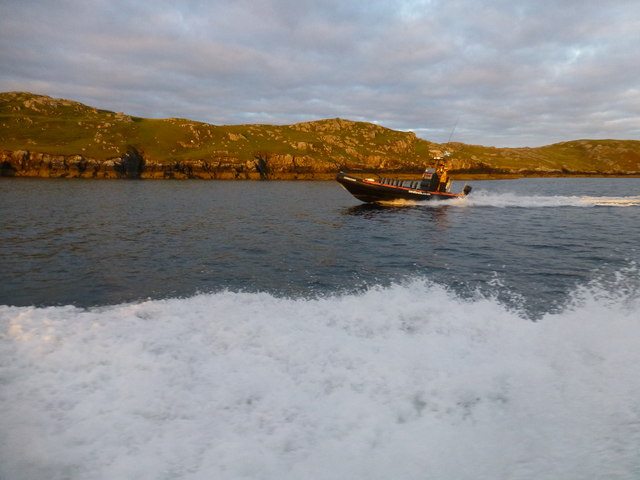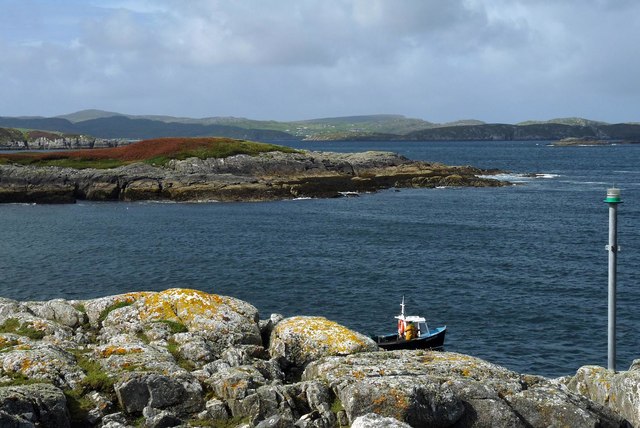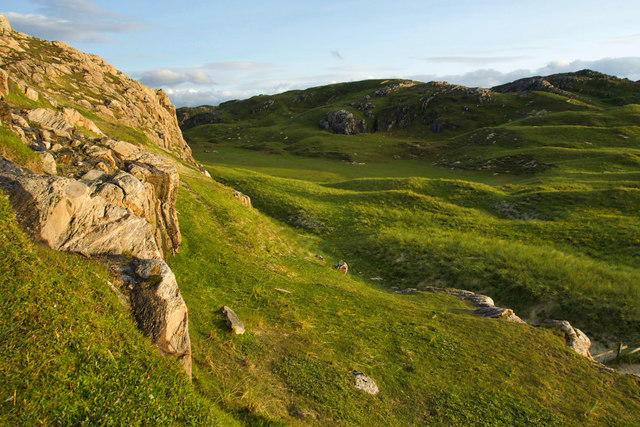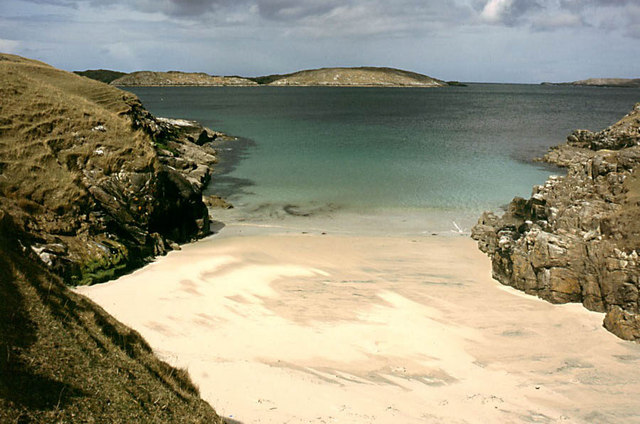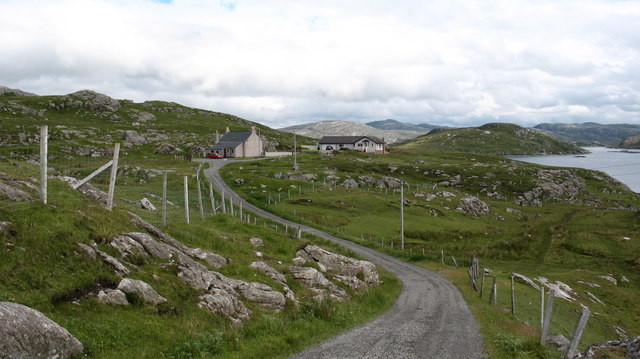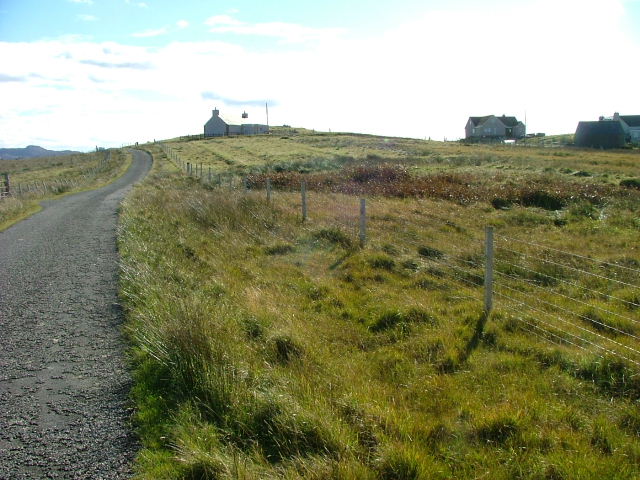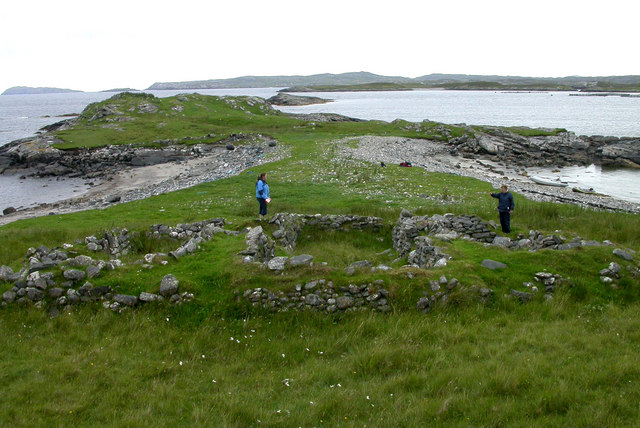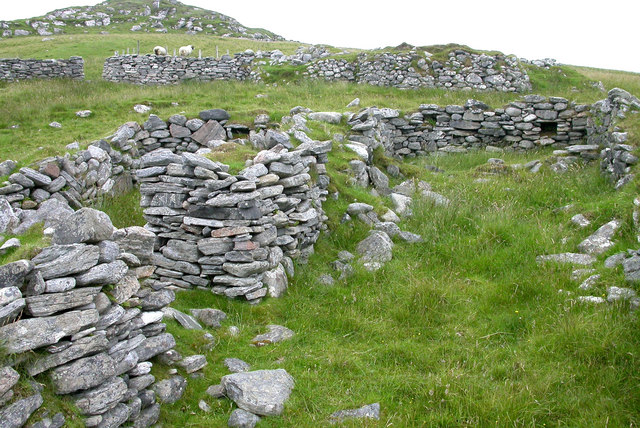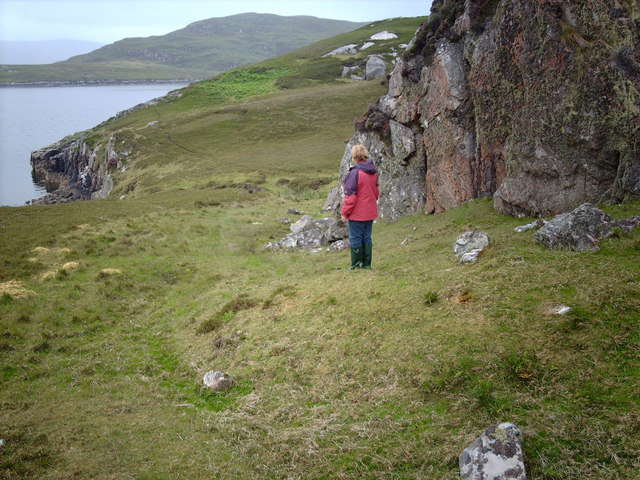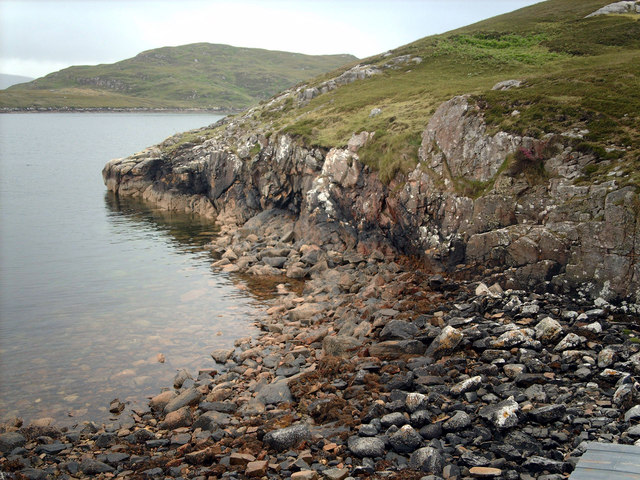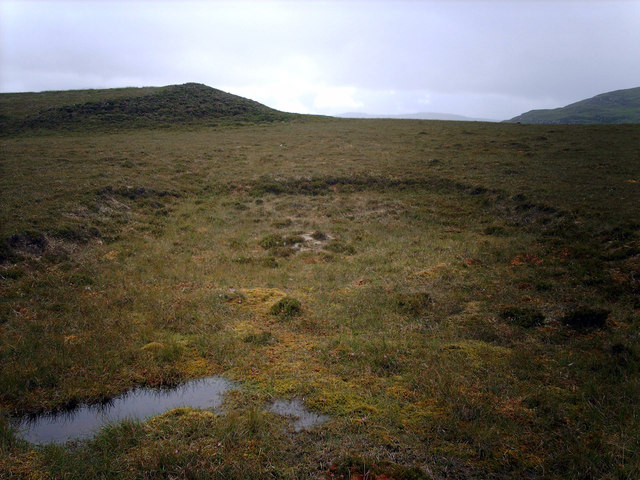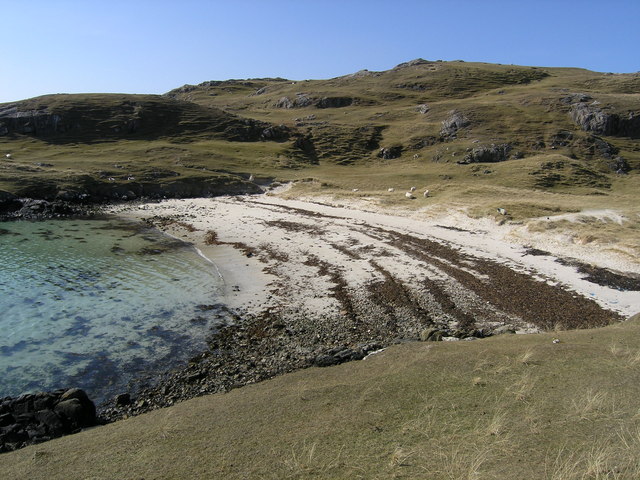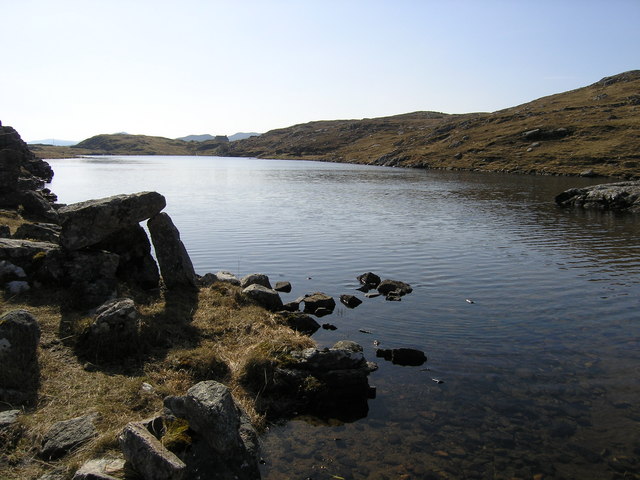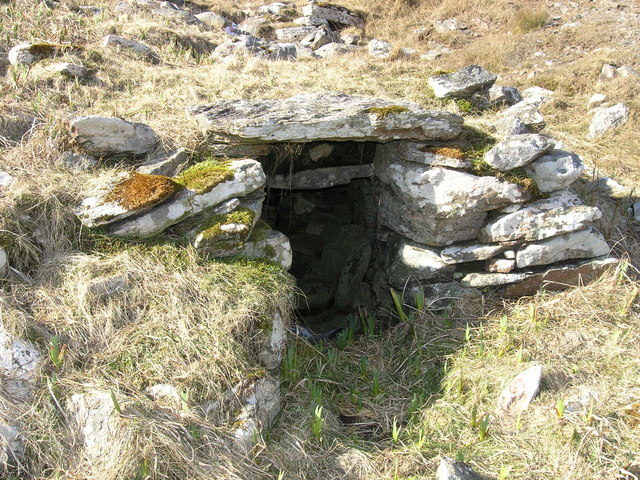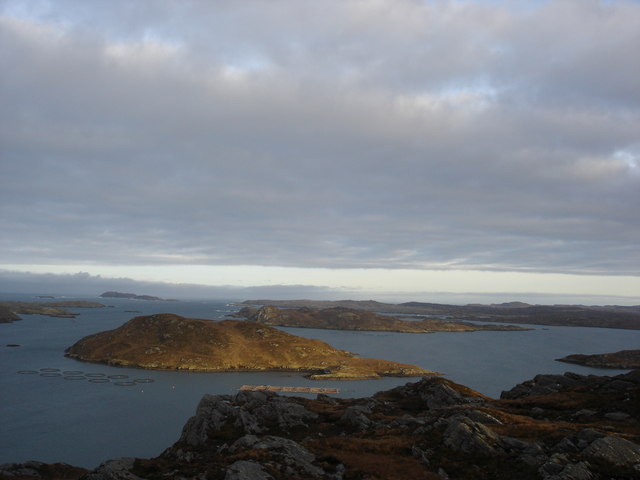Rubha na Mòine
Coastal Feature, Headland, Point in Ross-shire
Scotland
Rubha na Mòine
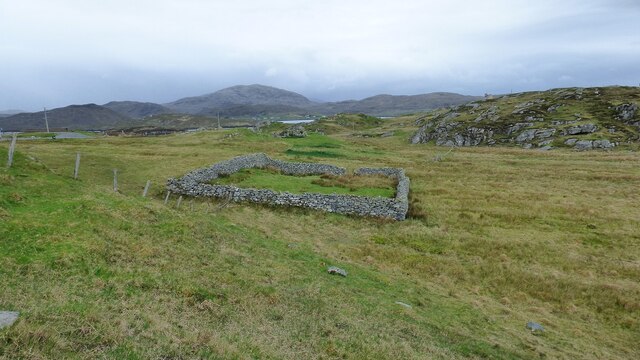
Rubha na Mòine, located in Ross-shire, Scotland, is a prominent coastal feature that consists of a headland or point jutting out into the sea. The name "Rubha na Mòine" translates to "Point of the Peat" in English, which reflects the area's historical association with peat bogs.
Situated along the rugged and picturesque coastline, Rubha na Mòine offers stunning panoramic views of the surrounding seascape. It is characterized by its steep cliffs, rocky outcrops, and a diverse array of flora and fauna. The headland is predominantly composed of sedimentary rocks, with layers of sandstone, limestone, and shale visible in some sections.
The coastal area of Rubha na Mòine is known for its rich biodiversity. Various species of seabirds, including gulls, fulmars, and puffins, can be observed nesting along the cliffs. The adjacent waters are also home to a range of marine life, including seals, dolphins, and occasionally, whales.
Visitors to Rubha na Mòine can explore the headland by following a coastal path that winds along the cliff edges. The path offers hikers the opportunity to appreciate the stunning scenery and observe the local wildlife in its natural habitat. However, caution is advised due to the steep and sometimes unstable terrain.
Overall, Rubha na Mòine is a captivating coastal feature that showcases the beauty and diversity of the Scottish coastline. Its dramatic cliffs, abundant wildlife, and breathtaking views make it a popular destination for nature lovers and outdoor enthusiasts alike.
If you have any feedback on the listing, please let us know in the comments section below.
Rubha na Mòine Images
Images are sourced within 2km of 58.204652/-6.8878729 or Grid Reference NB1234. Thanks to Geograph Open Source API. All images are credited.
Rubha na Mòine is located at Grid Ref: NB1234 (Lat: 58.204652, Lng: -6.8878729)
Unitary Authority: Na h-Eileanan an Iar
Police Authority: Highlands and Islands
What 3 Words
///take.allies.believer. Near Carloway, Na h-Eileanan Siar
Nearby Locations
Related Wikis
Loch Ròg
Loch Ròg or Loch Roag is a large sea loch on the west coast of Lewis, Outer Hebrides. It is broadly divided into East Loch Roag and West Loch Roag with...
Fuaigh Mòr
Fuaigh Mòr (sometimes anglicised as Vuia Mor) is an island in the Outer Hebrides of Scotland. It is off the west coast of Lewis near Great Bernera in...
Fuaigh Beag
Fuaigh Beag or Vuia Be(a)g is an island in the Outer Hebrides. It is off the west coast of Lewis near Great Bernera in Loch Roag. Its name means "little...
Loch na Berie
Loch Na Berie is a broch in the Outer Hebrides of Scotland, located approximately 400 yards from the shore, and is thought to have been located on an island...
Flodaigh, Lewis
Flodaigh is a small island in Loch Roag on the west coast of Lewis in the Outer Hebrides of Scotland. It is about 33 hectares (82 acres) in extent and...
Dun Bharabhat, Great Bernera
Dun Bharabhat (or Dun Baravat) is an Iron Age galleried dun or "semi-broch" situated on the island of Great Bernera near Lewis in Scotland (grid reference...
Vacsay
Vacsay (Scottish Gaelic: Bhacsaigh from Old Norse "bakkiey" meaning "peat bank island") is one of the Outer Hebrides. It is off the west coast of Lewis...
Callanish VIII
The Callanish VIII stone setting is one of many megalithic structures around the better-known (and larger) Calanais I on the west coast of the Isle of...
Have you been to Rubha na Mòine?
Leave your review of Rubha na Mòine below (or comments, questions and feedback).
